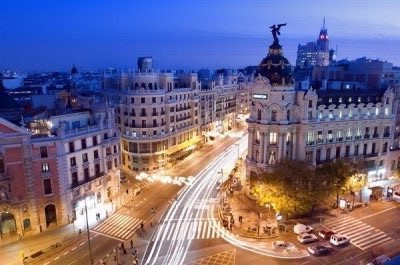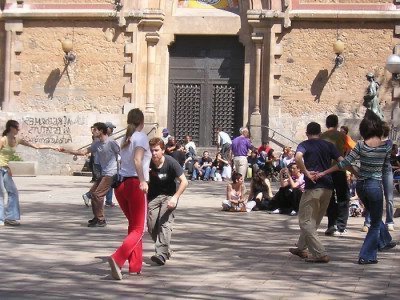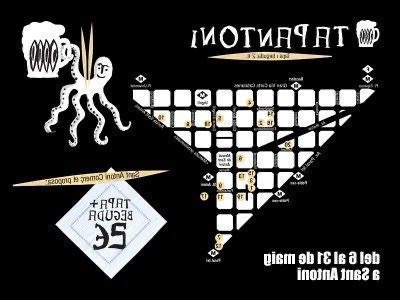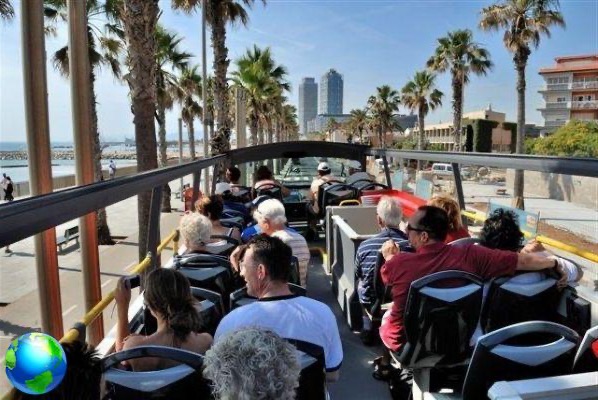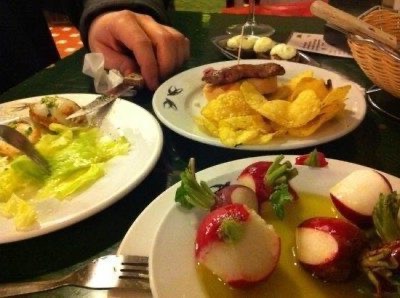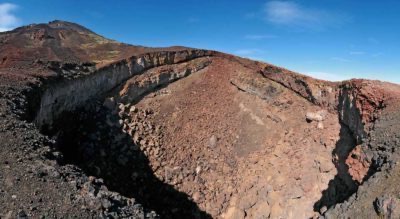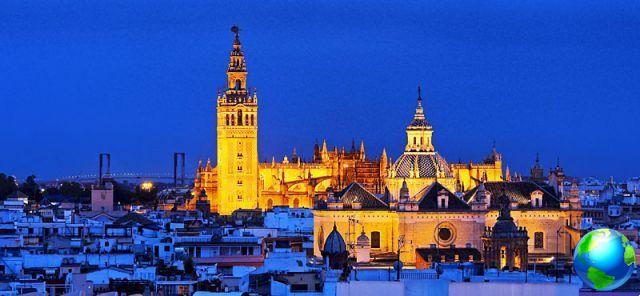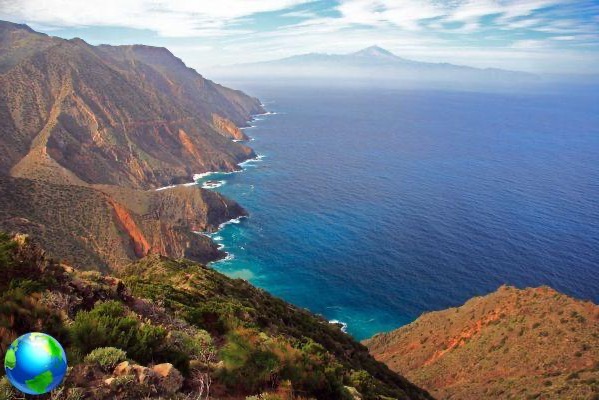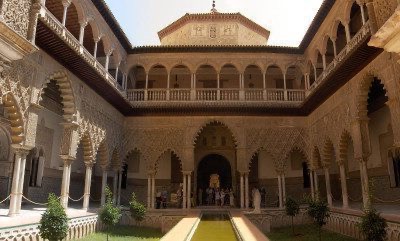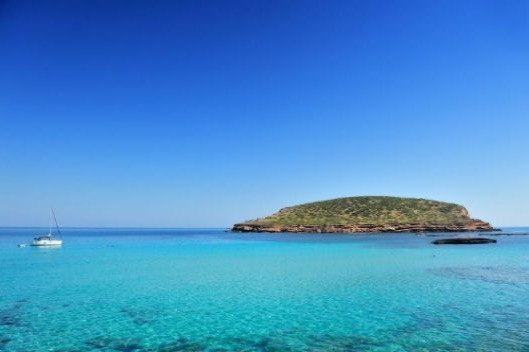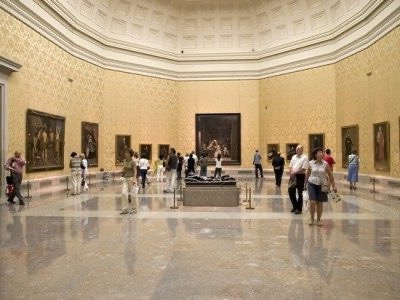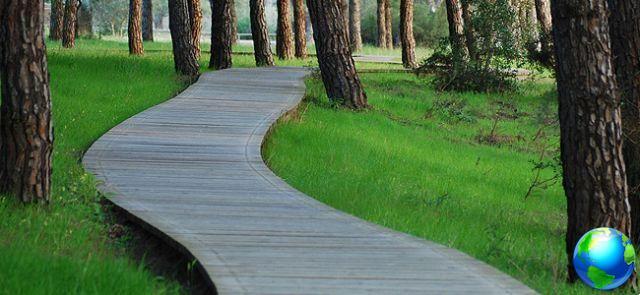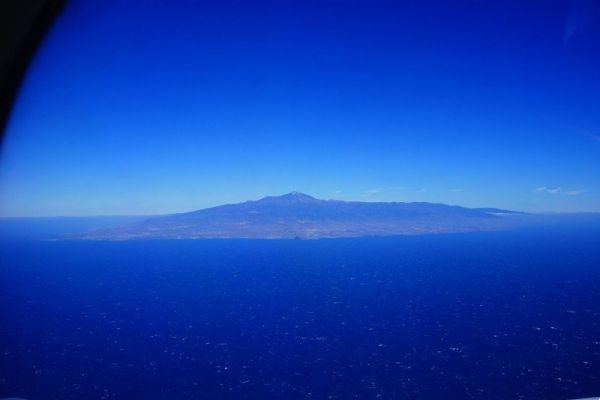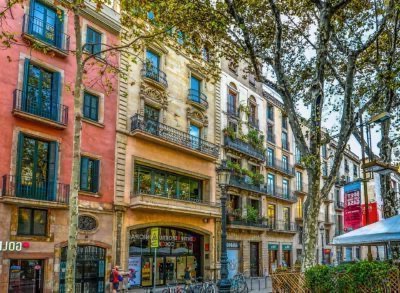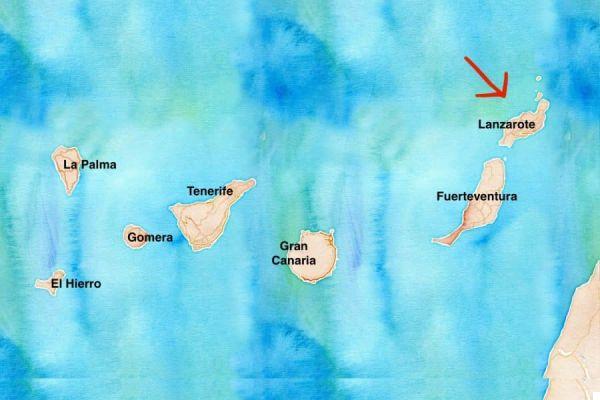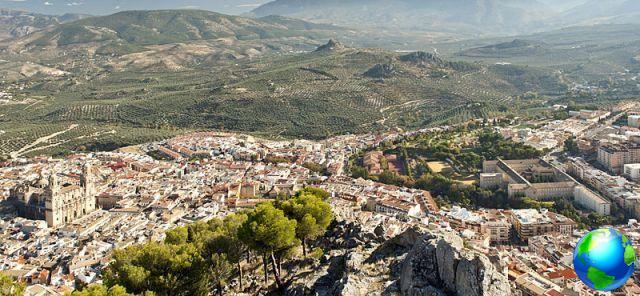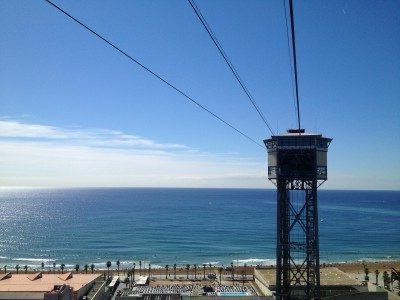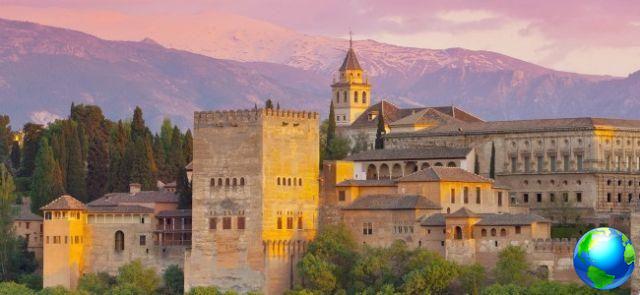
THEAndalusia it is a region to be discovered. Here there are in fact metropolitan cities, small villages, cathedrals and museums, but also very long beaches and many opportunities for fun. It would be a shame to get here and miss out on the best things to see and do, so here are some ideas for a one week itinerary in Andalusia.
It will be a rather intense journey, unfortunately it is hard to leave something out as there are so many things to see in Andalusia that a month would not be enough. To make all the stages it is almost necessary arental car. Not that public transport is poor, but having a car available allows you to minimize travel times and not waste precious time.
Map of the Tour dell'Andalusia
To make it easier for you to plan your tour in Andalusia, here is the interactive map with the proposed locations.
First day: arrival in Seville
Supposed to arrive at the Seville airport in the afternoon, once you have collected your rental car, the first thing to do is to go to the center. The best introduction to the city is by walking through the cobbled streets of the Barrio de Santa Cruz, the historic core of the city.
It will be a pleasure to get lost in the narrow streets that suddenly open onto wonderful squares; between one photo and another, time will pass almost without realizing it. After a dinner in one of the many restaurants in the neighborhood, if you still have energy you can attend one flamenco show organized in one of the many clubs in the area, otherwise it's time to go back to the hotel and rest.
Second day: Seville
Today is dedicated toexploration of Seville and its numerous monuments. The capital of Andalusia is home to truly unmissable buildings, starting with the magnificent Cathedral, built on the remains of the ancient city mosque dating back to the period of the Moorish domination, of which the Patio de los Naranjos and the Giralda, the ancient minaret now converted into a bell tower.
A visit to theArchive of the Indies, which contains numerous documents dating back to the age of the Spanish conquests, but also and above all to Maria Luisa Park, the green lung of the city, where the fantastic Plaza de Espana is located, built for the Ibero-American exhibition of 1929 and immediately became one of the most particular and interesting meeting places in Seville.
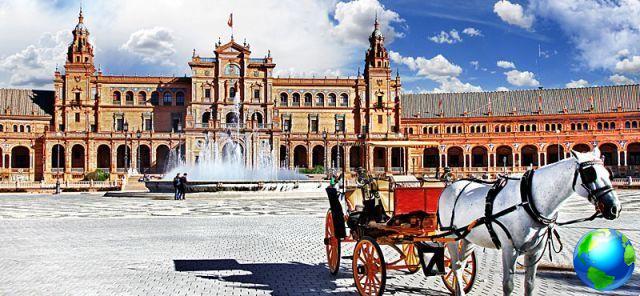
At the end of the day there is nothing quite like a stroll along the east bank of the fiume Guadalquivir, where you can admire the majestic tower of Gold, one of the symbols of the city, and the Maestranza Bullring, where it is possible to visit the Bullfighting Museum and, with an interesting guided tour, enter the arena where bulls and matadors still challenge each other in a fight for life so criticized all over the world but so felt in these parts .
For dinner, one of the best places to enjoy excellent tapas is the Bodega Santa Cruz, not far from the Cathedral, in Calle Mateos Gago. It will be hard to find a seat, but you can mingle with the locals and eat standing outside. You will not regret it.
Do you have more days to dedicate to Seville? Take a cue for your tour from the 3-day itinerary we have prepared for you!
Third day: Cordoba
After a relaxing sleep, the alarm clock is early to travel the approximately 150 kilometers that separate Seville from Cordoba. Once you arrive at your destination you will immediately realize that this is the beating heart of the truest Andalusia, between restaurants serving typical specialties of the region and tea rooms inspired by Morocco and the Arab domination: it was in fact here that the Moors decided to establish their capital.
The absolute must to visit in Cordoba is the Mezquita, that is the old mosque, located in the historic center, inside which after the Reconquista a Catholic Cathedral in gothic style. The arches of the mosque are still the symbol of Cordoba today, but the contrast with the Catholic architecture is truly unique in the world and certainly deserves an in-depth visit.
After visiting the Mezquita, a tour of the historic center of Cordoba it must obligatorily include a visit to the old man Roman bridge over the Guadalquivir, recently renovated, and atAlcazar of the Christian Kings, a building built in the Arabic style surrounded by lush gardens.
There is nothing better than ending the visit of Cordoba by walking through the city Juderia, the ancient Jewish quarter of the city, which retains a truly unique charm thanks to its white houses and very narrow streets, which makes it one of the most characteristic neighborhoods in all of Andalusia.
To end the day in the best possible way, you can enjoy a dinner based on typical Andalusian dishes like the rabo de toro, the salmorejo or the gazpacho, in one of the many restaurants in the city.
Fourth day: Granada
Granada is one of the wonders of Andalusia, a city not to be missed. It is located in the foothills of the Sierra Nevada, at an altitude of more than 700 meters above the sea level.
With the little time available that a one week tour of Andalusia offers, you need to head straight to the Alhambra, the palace that made Granada famous all over the world. This Moorish citadel is an example of the historical link between Andalusia and Islam, and has been declared World Heritage Site by Unesco in 1984.
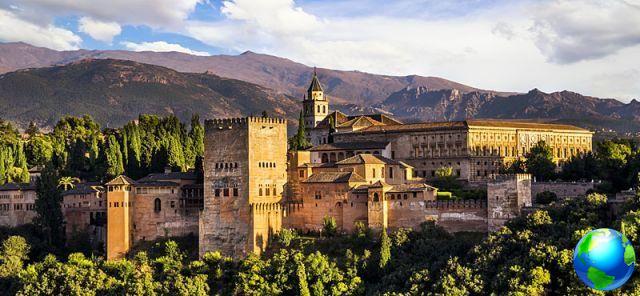
L'Alhambra consists of a different zone, chiamata Alcazaba, in a residential area, namely the Palazzo Nasrid, and in the garden of the Generalife. The entire complex was built on a hill on the southeast edge of the city, and is fronted by theAlbayzin, or Albaicin, the historic district which was the ancient center of Granada. It is located on the hill opposite the Alhambra, and here are the classic Andalusian white houses with patios and windows adorned with flowers.
Tickets for the Alhambra
To avoid exhausting queues and unnecessary waste of time, it is advisable buy in advance tickets for the Alhambra, but keep in mind that the visiting hours for the Nasrid Palace are fixed and arriving late will prevent you from entering the palace!
A visit to the entire Alhambra complex will take you a long time. There won't be much left to explore the rest of Granada, but the more willing, besides taking a tour of the Albayzin, can head to the square of the Cathedral, to admire this giant of Catholic architecture dating back to the sixteenth century, built as often happens in Andalusia on the remains of an ancient mosque.
This day will have been rather tiring: it is therefore better to avoid returning to the Albayzin for dinner, and find a place in one of the bars in the modern part of the city, or around the cathedral.
Fifth day: Malaga
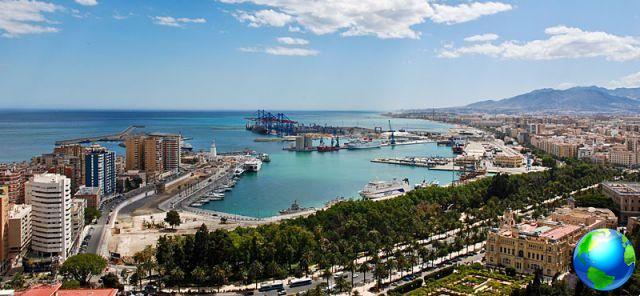
After four days of cultural visits, there is nothing better than indulging in a couple of days of leisure on the coast. We then proceed early in the morning towards the south for about an hour and a half until we reach Malaga, the most important Andalusian city of the Costa del Sol. We will take it as a base to explore the area, starting from the beautiful Fuengirola and Benalmadena, up to go to Marbella, chic and trendy with its areas beaten by celebrities from all over the world.
But today we stay in Malaga as there are many things to see, starting from its historic center which by day is a shopping paradise, especially along Larios Street, while in the evening it comes alive with a multitude of people who literally storm the numerous bars, pubs and restaurants. A climb to theAlcazaba, an ancient Moorish fortress from which you can admire a truly incredible panorama of the coast.
It is time to head towards the tourist port, along which there are restaurants of all kinds, where you can have lunch outdoors while being caressed by the pleasant Mediterranean breeze: ideal for a relaxing lunch break.
In the afternoon, the best thing to do is to relax in the Malagueta, the splendid city beach, well maintained and cared for, and with truly transparent, limpid and calm water. Spending a few hours relaxing between sun and sea will only make you appreciate even more the many facets of Andalusia.
In the evening, as mentioned, just head towards the historic center to find a place for an aperitif, one for dinner and one for the evening. The choice is almost endless.
Sixth day: Malaga and the Costa del Sol
La Costa del Sol is one of the most important tourist destinations in Europe, literally besieged by tourists from all over our continent. We leave in the morning to reach Benalmadena, where we will stop in Puerto Marina to take a pleasant walk among yachts and all kinds of shops. If things go on for a long time, there is no problem, here is full of restaurants of all kinds where you can have lunch at reasonable prices.
If, on the other hand, you are looking for a more authentic Spanish experience, there is nothing better than climbing up to Benalmadena Pueblo, which with its white houses is a typical Andalusian village where time seems to have stopped, and where, among other things, you have a truly exceptional view of the coast.
Those who love nature can therefore head towards the Mariposario, a small zoo-park where butterflies are the absolute protagonists. Those who prefer the atmosphere of great conquests can visit the Castle of Colomares, inspired by Christopher Columbus and his travels to what must have been India.
Leaving Benalmadena, moving west after about 40 minutes of very scenic road you will reach Marbella, the most elegant town on the Costa del Sol. Here you can choose whether to spend a few hours on the beach, perhaps with a nice cocktail in hand, or explore the wonderful old town, a very well preserved typical Andalusian village. For those who want to spend a glamorous afternoon, Puerto Banus it is the ideal area, among yachts, boutiques and luxury cars.
The sera, turn to Marbella for dinner: along the Duke of Ahumada Avenue and in its streets there are many restaurants and tapas bars, ideal for tasting many dishes of Spanish and Andalusian cuisine. Stay in Marbella for the night.
Seventh day: Gibraltar and Cadiz
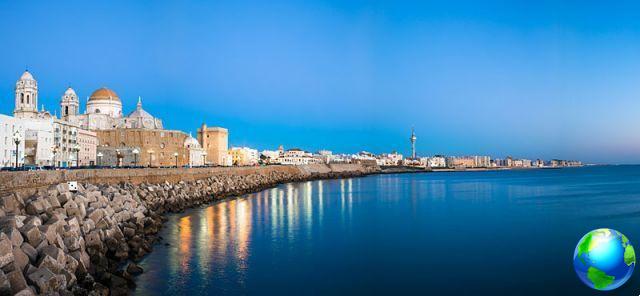
Leaving Marbella early in the morning, continue west towards Gibraltar for an intense but unforgettable day. The border crossing can take a long time due to the long queues that form, so the advice is to arrive very early, or to avoid crossing by car. Gibraltar itself doesn't offer much, but the idea of a British territory in the middle of Andalusia it is very unusual, and it is worth spending the morning there.
After a refreshing lunch, perhaps in a english pub based on fish and chips and a good beer, it's time to get back on the road to reach Cadiz, to end the tour of Andalusia. Cadiz is a very special city, built on a narrow strip of land. Among its must-see attractions are the beautiful Cathedral, the Plaza de San Antonio with its church, and the Plaza de San Huan de Dios, which overlooks the old town hall.
With a little time to spare, one of the most particular and interesting attractions in Cadiz is the Tavira Tower, inside which there is a dark room, which, with a set of convex lenses skilfully maneuvered by the staff, allows you to see images and panoramic views of the old city projected on a concave disk.
In the evening, for dinner, there is nothing better than being inspired by the many restaurants in Cadiz serving excellent tapas and Andalusian cuisine, or enjoying good fried fish in one of the city's freidurias.
Eighth day: return to Seville and departure
It is the last day of the tour dell’Andalusia: it starts from Cadiz in the direction of Seville. The journey, mostly on the motorway, takes just over an hour. If the return flight time is in the morning, unfortunately there will be no other time available.
Alternatively, you can spend some free time in the city, perhaps dedicating yourself to shopping and souvenirs in the many shops in the area of Tetuan Street and Sierpes Street, before returning permanently to the airport and leaving for home.
Route: 1030 km | Duration: at least 8 days | Recommended period: spring and autumn




